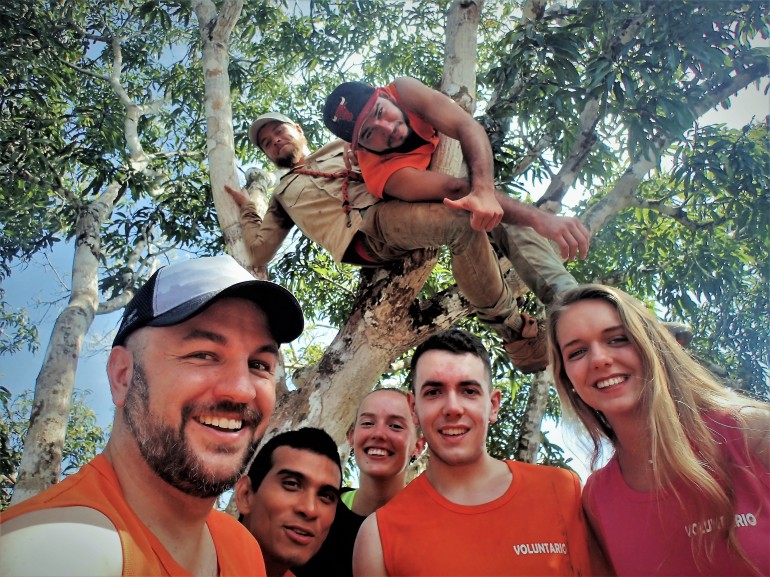Volunteering abroad is a noble undertaking and can be a very transformative experience. You’ll make a difference, meet people from around the globe, experience new cultures, and feel a sense of purpose. That is, of course, if you approach it with the right motivations. When you join a volunteering project, you’ll encounter individuals with varying levels of commitment. Below are a few examples that I’ve encountered in my first few months of volunteering abroad.
The Total Altruist
The Total Altruist is the pinnacle of volunteers. They’re internally motivated, usually somewhat knowledgeable about the project subject, and passionate about inciting positive change. They also often have experience as a volunteer or working with the subject previously; such as nurses, teachers, or animal specialists. The Total Altruist is driven solely by the desire to make a significant difference in whatever they’re working with. People who commit to organizations like Doctors Without Borders, the Peace Corps, and AmeriCorps often fall in this category as they are committing significant time and effort to volunteer projects.
This type of volunteer often falls into one of two roles: leader or loner. It’s possible that they’ll transcend these roles, but in most cases, they either do their own thing or will drive others to increase their contributions. One negative aspect of the Total Altruist volunteer is that they run the risk of becoming jaded towards volunteers (or even staff members) whom they don’t feel live up to their ideals for the project.

The Motivated Traveler
The Motivated Traveler is similar to Total Altruist in their motivations for volunteering. They are often traveling long-term or living in a country outside of their homeland. The difference is they haven’t yet reached the internal motivation level of the Total Altruist. While some of their motivations will be internal, the external motivations are slightly dominant. They want to work with kids or animals either because they’re hoping to work with them professionally (teacher, vet, etc.) or just want to escape the 9 to 5 grind by following a passion. They hope to help the environment because of governments and corporations continually polluting our air, lands, and waters. Or they just want to do something that will get them out of their regular routine.
The Motivated Traveler has the best potential to develop into a Total Altruist volunteer. This change would be different for each volunteer as internal motivations are inherently personal. Triggering events could include a significant life change (birth, death of someone close, divorce, etc.), a traumatic or challenging experience, or a strong desire to change the path of one’s life.

The Voluntourists
As voluntourism gains popularity, more voluntourists will flood volunteering projects. In one way or another, all volunteers (with the exception of those in the Peace Corps, Doctors Without Borders, etc.) are essentially voluntourists. Voluntourists are people who spend a few weeks to a couple months volunteering at one or more projects. They are usually using their vacation/holiday time to volunteer rather than just travel. They want to make a difference but don’t have the ability to do so in a long-term capacity. Gap year students and traveling families who volunteer often fall in this category. Voluntourists span the entire spectrum of volunteer types. They can be highly motivated to contribute or they’re simply doing it to look good for their friends, resume, or social media.

The Cell Phone
This type of volunteer is easy to spot. They’re the person you know little about because they spend the majority of the time on their cell phone. The Cell Phone volunteer may be very helpful when the work is being done, but during down time they choose their iPhone over human interaction. Oftentimes, this is someone who is either shy, antisocial, or missing their boyfriend or girlfriend back home. They dominate the WiFi bandwidth with their Skype or Facetime conversations or are constantly reloading their SIM cards for more minutes and data. This is one of the most disappointing of volunteers because they’re missing out on one of the most wonderful part of volunteering, connecting with fellow volunteers.

The Partier
The partier wants to do nothing but drink heavy and/or do drugs while paying no attention to the actual work. They’re often the life of the party who gets everybody motivated to let loose and have a good time. Unfortunately, they’re usually a hungover mess or just too tired to get up when the morning work needs to be done because they didn’t go to sleep until 4AM. They may occasionally contribute on days when they didn’t get wrecked the night before, but it doesn’t make up for the times they do nothing.
This type of volunteer is frequently a young person on vacation or gap year with few internal motivations to make a difference. They’re loud, charming, flirtatious, and usually lacking in actual substance. They see the project as a vacation and treat it as such.
It’s cool to party while you’re volunteering. You should have a good time and let loose occasionally. But don’t let it affect your contributions to the project. You wouldn’t skip work at your regular job just because you’re hungover or went to bed too late. Why should that be any different when you’re volunteering?

The Useless Free-Loader
The Useless Free-Loader is not necessarily a partier but often falls in that category as well. This individual possesses almost no internal motivation for the project. They’ll be late or won’t show up to work shifts on time. They’ll volunteer to take on only the easiest or most enjoyable tasks. They’ll do as little as possible to get by or will just disappear only to be found later after all the work is done for the day.
This is one of the most frustrating volunteer types to deal with, especially if they’re not paying to volunteer through a program like WorkAway. It’s perfectly fine to volunteer for free if you’re working hard to contribute. It’s not acceptable (in my opinion) to take a room and three meals per day (plus any other fringe benefits that volunteers receive) while providing nothing in return.
This isn’t to say that paying volunteers can coast, but non-paying should take the work even more seriously since they’re not providing any sort of financial contribution either. Paying volunteers’ monetary contributions often finance the salaries of the local staff and food/facilities/materials needed to keep a project running. Those funds are reduced whenever a useless free-loader fails to provide the manpower they committed to upon joining the project. So, don’t be a Useless Free-Loader. If you sign up for a project, paying or free, do the work. It’s usually not overwhelming work and you’ll get so much more in return than you put in.

There are countless variations of volunteer types that you’ll encounter. It’s possible that some volunteers will transition from one type to another during a project. Internal motivation is something that can’t be measured or taught, it’s solely up to the individual to figure out what drives them. You can, however, be a leader and find ways to motivate other volunteers to contribute. Even if you’re not comfortable with taking a leadership role, you can still encourage others by setting a good example. Be on time, work hard, and maintain a positive attitude around your peers – you’d be surprised how easily that can motivate people.